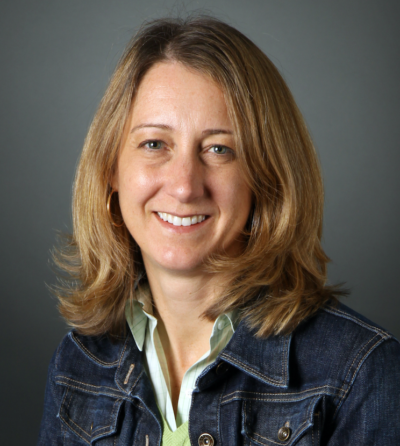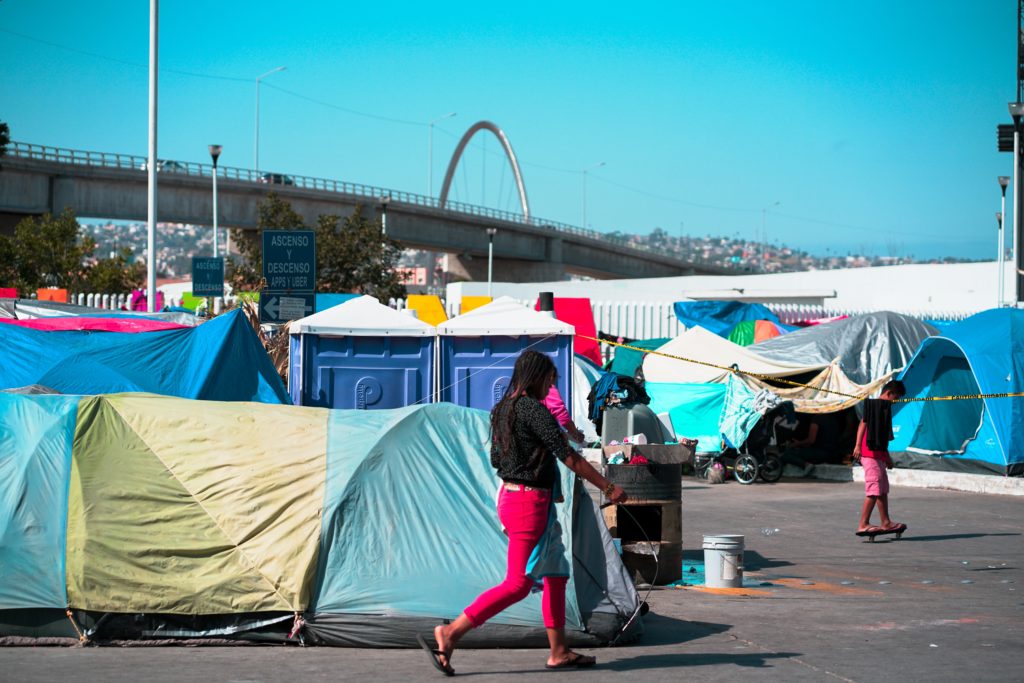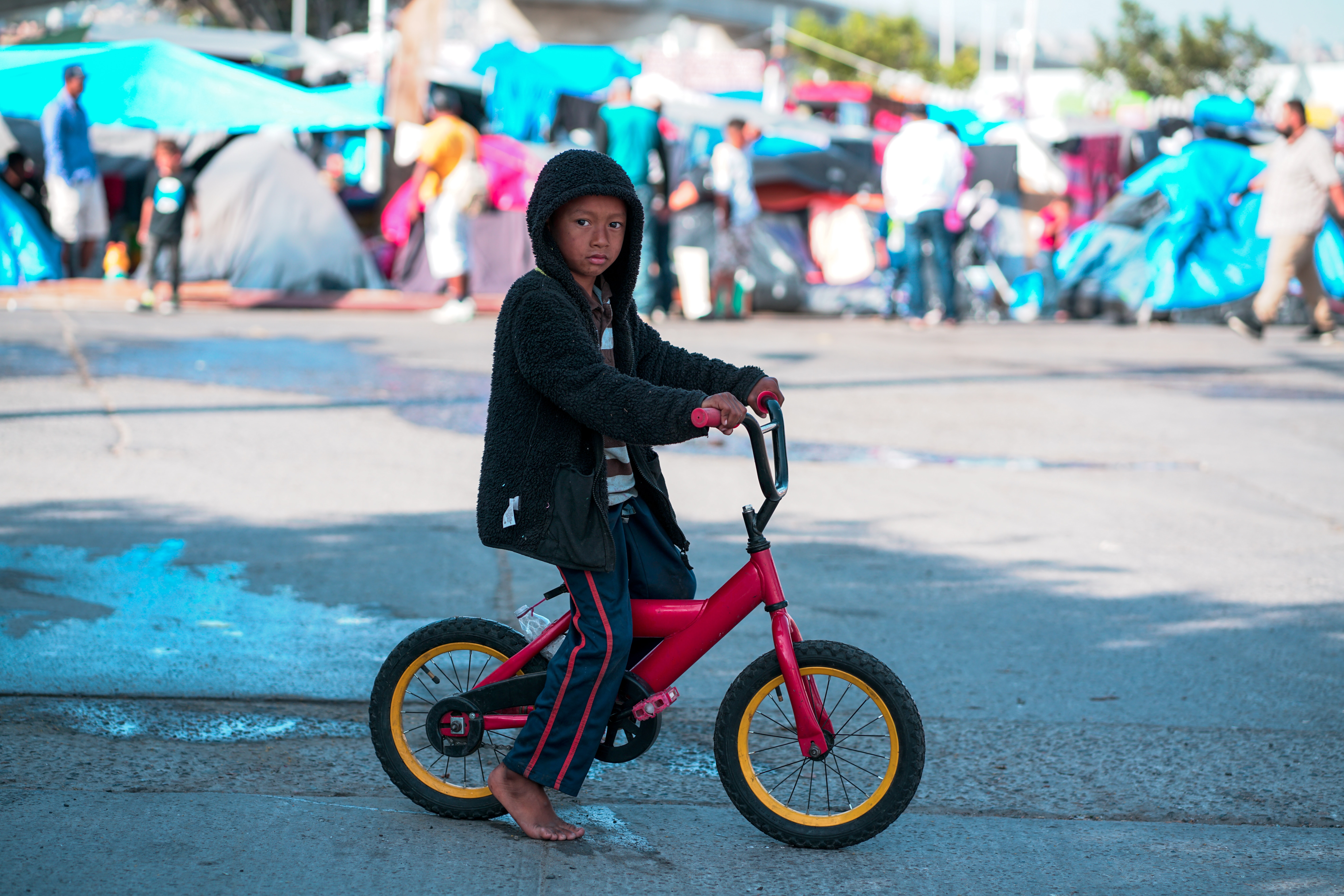Published: 08/06/2021
Global Health Faculty Fellow Dr. Lisa Chamberlain has been an outspoken advocate for healthcare at the border, but recently she has expanded her efforts to meet the needs of asylum seekers in their destination cities with creative solutions.
By Lucas Oliver Oswald.
When a string of child deaths were reported in US detention centers across the US/Mexico border during the Trump Administration, Dr. Lisa Chamberlain felt she had reached a tipping point.

Dr. Chamberlain, who is a professor of pediatrics at Lucile Packard Children’s Hospital at Stanford, convened a town hall at Stanford. It was a busy time, and Dr. Chamberlain feared no one would come, but as more and more people trickled in, people began to give up their chairs and stand to make way for everyone.
A program was born out of that meeting, originally called Children at the Border and now Families at the Border, which Dr. Chamberlain directs and through which much has been accomplished in the last two years. Families at the Border has sent a string of Stanford faculty and healthcare providers to the border to support on-the-ground efforts, and provided virtual trainings to midwives in Tijuana during the height of the pandemic.
While this program has filled an important gap in providing aid to those in the initial stages of immigration, the healthcare needs of migrants are not isolated to the border. As families make their way to their destinations around the US, they come with specific challenges that put their health at risk. Recently, Dr. Chamberlain has been expanding her efforts to meet these needs wherever they are.
I sat down with Dr. Chamberlain to discuss the many challenges migrant families face and how our healthcare systems can adapt to provide equitable care to these disadvantaged communities.
Can you give us a sense of what kind of barriers asylum seekers face when they cross the border?
They have such a difficult path to navigate to access healthcare.
The first step when they arrive is to present to a CBP facility, Customs Border Protection. Typically, there are some to no medical professionals there. Depending on the politics at that particular moment, they’re released on the other side of the border with a future court date, given a bus ticket to their destination city, and sent on their way.
When they get to that destination city, children may qualify in some states for state specific programs, but adults will not have access to public health insurance. In some states, they may be able to access a network of community health clinics that take care of everyone regardless of their ability to pay. Finding their way to the destination city and finding a community health clinic to get care involves challenges including discrimination, cost, transportation, language, and just generally understanding the healthcare system.
It’s overwhelming.
You’ve been working on a program called SCAN, the Specialty Care Access Network, that aims to solve this gap in care for children with severe illnesses. How does this network work?
Of the people that cross the border, there’s a small percent of kids who have serious medical problems — injuries from their journey, heart defects, leukemia, things of this nature. Healthcare is already difficult for these families, but when that care is complex and urgent, it’s even more difficult to navigate.
Those are the kinds of children that SCAN was set up to take care of — children who are medically complex and dependent on immediate healthcare.

In the past, when one of these children arrived at the border and said they’re headed to, say, Cincinnati, the response used to be, “Okay. When you get there, find the Children’s Hospital and figure it out.”
SCAN was developed to solve this gap in care. We have identified a network of committed pediatricians in these destination cities all around the country. Using SCAN, we tell the family, “In Cincinnati, this specialist will be waiting for you.” We provide phone numbers and all the connectivity they’ll need so there’s no time lost. When they arrive, they land easily at their destination with facilitated treatment and care.
My role in this has been to help build the network of pediatricians but Marsha Griffin from University of Texas, Rio Grande Valley, and Karla Fredericks of Baylor are the real masterminds behind the program.
Has it been difficult to put together the network? Are pediatricians generally interested in being involved?
We started out by reaching out to people in the top 12 cities that asylum seekers were headed to. Every single doctor we reached out to in those cities said yes. Then we were up to 15 cities. Then 20. Word spread quickly through the American Academy of Pediatrics and some immigration interest groups. Today we’re at more than 50 cities with pediatric coverage.
And I’ll remind you that these are volunteers. These are people with big jobs and busy lives and they are raising their hands and saying, “I will take on these socially and medically complex situations because I want to help.”
Pediatricians are a special group of people. They’re generous. They’re compassionate. They’re upset by what they hear about at the border and they want to help.
Outside of complex medical problems, migrants have many specific medical needs that our healthcare systems are generally not equipped to handle correctly. Can you tell us about the Asylum Protocol Initiative you developed at Stanford and why it is necessary?
A few years ago we started to see families coming with electronic bracelets on their ankles, and we didn’t know what was going on. At the time, ICE was having an increased presence. The families were afraid of ICE raids — an entirely new dynamic for the healthcare team to experience.
We learned that these families were coming from the border, many of them with very severe trauma and in dire circumstances. So we convened a group of people, pediatricians, caseworkers, social workers, even lawyers from Stanford Law School, and asked the question, “Is there something we could be doing differently for these families?”
Now, when you or I go to the hospital, we have nurses, doctors, physician assistants, and all kinds of doctors coming in and asking about the circumstances of our medical problem. For asylum seekers, that repeated questioning is not helpful — it can be traumatizing. Additionally, their needs are different. They have basic needs – how to navigate the education system, legal support, food access, and without these needs being met, their security and health continues to be at risk.
Once the Asylum Protocol is activated, how is their care different?
As soon as we have identified a family, a case manager comes who is specifically trained to take a very sensitive history in the family’s native language. That person captures their story and the whole team is updated to minimize the retelling of their story, and the healthcare team treats them with this extra level of sensitivity throughout their stay.
Then we also give them a “Welcome to the USA” packet that we developed, a warm-hearted welcome full of answers to many of the most frequent questions: how does the healthcare system work? Where should you go for future care? How can you access legal or food support? How do you enroll in school?

Then to graduate from the program, when they are discharged they are connected to primary care. Their follow up appointments are set up, and they are tied into the services they need in the community. At that point, they would be considered graduated.
This is something that has a real impact for people and is relatively easy to implement. We are working on making is completely open-source, and as soon as it is, we will share it with everyone.
Header photo by Barbara Zandoval on unsplash.com.

